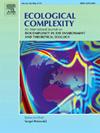Julio Alberto Alegre Stelzer , Jorrit Padric Mesman , Rita Adrian , Bastiaan Willem Ibelings
下载PDF
{"title":"Early warning signals of regime shifts for aquatic systems: Can experiments help to bridge the gap between theory and real-world application?","authors":"Julio Alberto Alegre Stelzer , Jorrit Padric Mesman , Rita Adrian , Bastiaan Willem Ibelings","doi":"10.1016/j.ecocom.2021.100944","DOIUrl":null,"url":null,"abstract":"<div><p>Early-warning signals of a regime shift (EWS) indicate, for a wide range of systems, if a tipping-point is being approached. In ecology, EWS are well established from a theoretical perspective but are far from unequivocal when applied to field data. The gap between theory and application is caused by a set of limitations, like the lack of coherence between different EWS, data acquisition issues, and false results. Experiments assessing EWS may provide an empirical mechanistic understanding of why an EWS was observed (or failed to be observed), which often cannot be elucidated by simple computational modeling or pure environmental data. Here we focused on aquatic experiments to explore to what extent the existing EWS experiments can bridge the gap between the theory and real-world application. For that, we used the Thomson-ISI Web of Science© database to retrieve EWS experiments executed before early-2020, detailing their experimental designs and each EWS assessed. Success rates - correct anticipation of tipping points – were around 70% for the most used EWS (assessment of autocorrelation, variance, recovery, and shape of the distribution using abundance, Chlorophyll-a, Phycocyanin, and dissolved oxygen data). Yet, no EWS showed to be 100% reliable, and their use demands cautious interpretation. As a rule, we observed that experiments were not designed to tackle issues encountered in real-world situations. They lack a deep mechanistic understanding of why, when, and how an EWS was observed or not. When experiments did aim to assess issues encountered in the real world, the experimental designs were often of low ecological significance. We also investigated the relationship between sampling and the success rate of EWS, observing that the sampling regime might have to be tailor-made towards specific monitoring objectives. Moreover, experiments have taught us that the use of EWS can be more versatile than expected, going from monitoring the extinction of single populations to the anticipation of transient regime shifts. Most of the experiments presented here supported empirical proof of the existence of EWS in aquatic systems. Still, to bridge the gap between theory and application, experiments will have to move closer to real-world conditions and better support a mechanistic understanding of why EWS may succeed or fail to anticipate a regime shift. For that, we provide six elements to take into account when designing experiments that could enhance the capabilities of EWS to go beyond the stage of proof-of-concept.</p></div>","PeriodicalId":50559,"journal":{"name":"Ecological Complexity","volume":"47 ","pages":"Article 100944"},"PeriodicalIF":3.1000,"publicationDate":"2021-09-01","publicationTypes":"Journal Article","fieldsOfStudy":null,"isOpenAccess":false,"openAccessPdf":"https://sci-hub-pdf.com/10.1016/j.ecocom.2021.100944","citationCount":"5","resultStr":null,"platform":"Semanticscholar","paperid":null,"PeriodicalName":"Ecological Complexity","FirstCategoryId":"93","ListUrlMain":"https://www.sciencedirect.com/science/article/pii/S1476945X21000374","RegionNum":3,"RegionCategory":"环境科学与生态学","ArticlePicture":[],"TitleCN":null,"AbstractTextCN":null,"PMCID":null,"EPubDate":"","PubModel":"","JCR":"Q2","JCRName":"ECOLOGY","Score":null,"Total":0}
引用次数: 5
引用
批量引用
Abstract
Early-warning signals of a regime shift (EWS) indicate, for a wide range of systems, if a tipping-point is being approached. In ecology, EWS are well established from a theoretical perspective but are far from unequivocal when applied to field data. The gap between theory and application is caused by a set of limitations, like the lack of coherence between different EWS, data acquisition issues, and false results. Experiments assessing EWS may provide an empirical mechanistic understanding of why an EWS was observed (or failed to be observed), which often cannot be elucidated by simple computational modeling or pure environmental data. Here we focused on aquatic experiments to explore to what extent the existing EWS experiments can bridge the gap between the theory and real-world application. For that, we used the Thomson-ISI Web of Science© database to retrieve EWS experiments executed before early-2020, detailing their experimental designs and each EWS assessed. Success rates - correct anticipation of tipping points – were around 70% for the most used EWS (assessment of autocorrelation, variance, recovery, and shape of the distribution using abundance, Chlorophyll-a, Phycocyanin, and dissolved oxygen data). Yet, no EWS showed to be 100% reliable, and their use demands cautious interpretation. As a rule, we observed that experiments were not designed to tackle issues encountered in real-world situations. They lack a deep mechanistic understanding of why, when, and how an EWS was observed or not. When experiments did aim to assess issues encountered in the real world, the experimental designs were often of low ecological significance. We also investigated the relationship between sampling and the success rate of EWS, observing that the sampling regime might have to be tailor-made towards specific monitoring objectives. Moreover, experiments have taught us that the use of EWS can be more versatile than expected, going from monitoring the extinction of single populations to the anticipation of transient regime shifts. Most of the experiments presented here supported empirical proof of the existence of EWS in aquatic systems. Still, to bridge the gap between theory and application, experiments will have to move closer to real-world conditions and better support a mechanistic understanding of why EWS may succeed or fail to anticipate a regime shift. For that, we provide six elements to take into account when designing experiments that could enhance the capabilities of EWS to go beyond the stage of proof-of-concept.

 求助内容:
求助内容: 应助结果提醒方式:
应助结果提醒方式:


